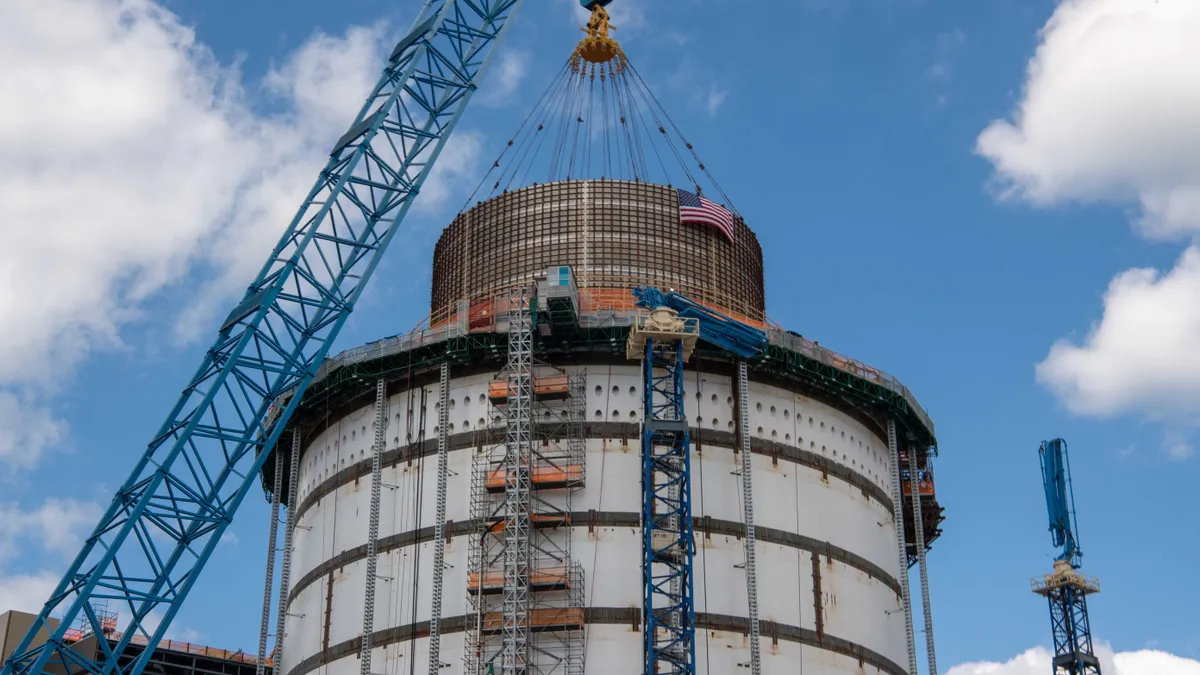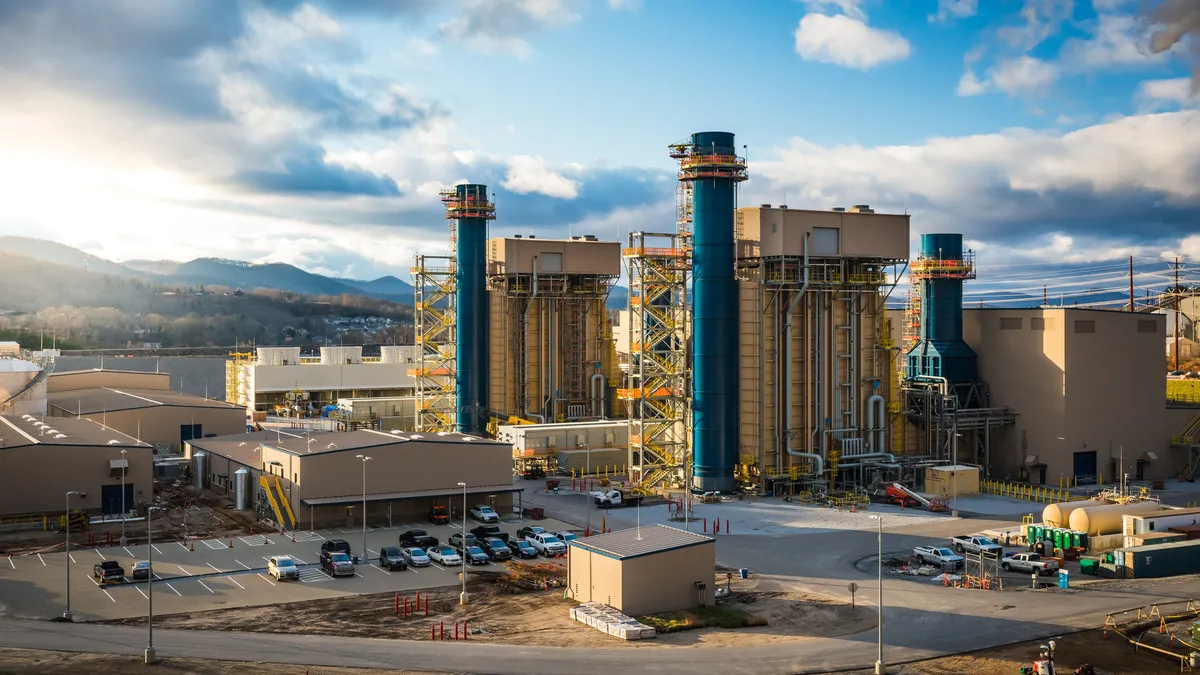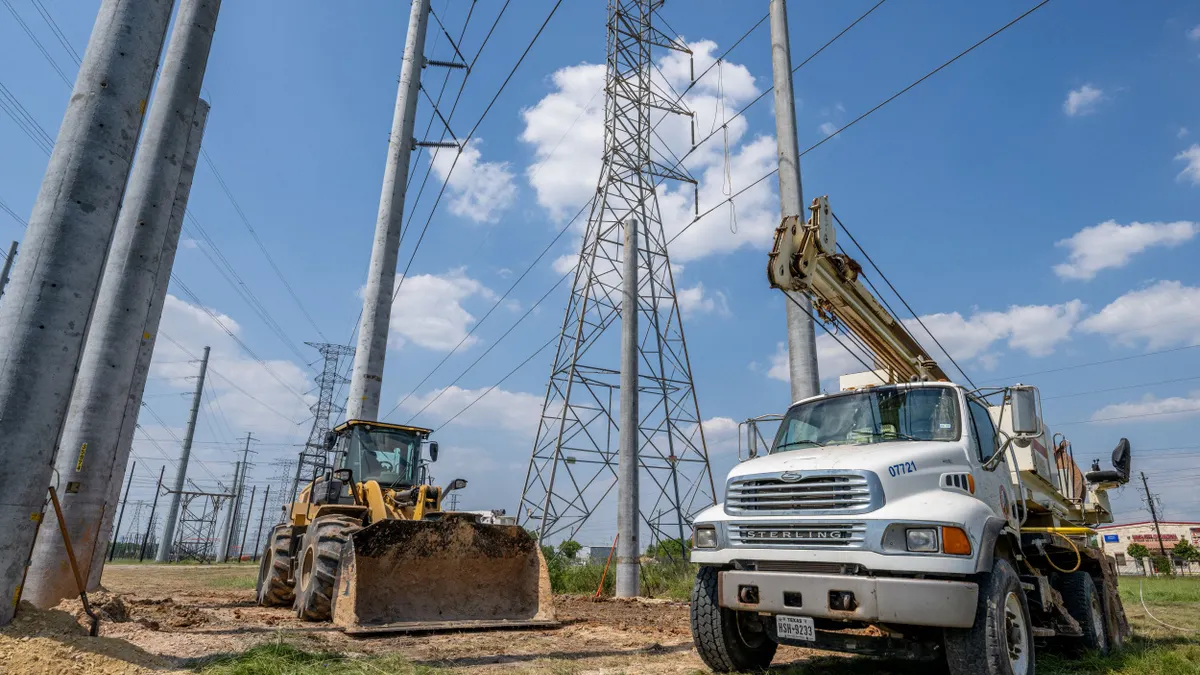In a bid to slash emissions, Austin Energy was just beginning to utilize a new carbon price adder when COVID-19 hit. The mechanism would limit coal dispatch and eliminate thousands of tons of carbon emissions. Despite a pandemic that has upended traditional ways of doing business and forced the utility to turn its focus from energy to employee and customer health, the clean energy strategy has worked.
The REACH program — which stands for Reduce Emissions Affordably for Climate Health — has helped Austin reduce its emissions about 20% since the first quarter of this year.
"What crazy times," Austin Energy General Manager Jackie Sargent said in an interview. "We've had a relatively smooth transition."
REACH plan expected to reduce emissions further
The REACH plan is expected to reduce Austin Energy's carbon emissions by 30% between March 2020 and the utility's exit from the coal-fired Fayette Power Project by the end of 2022. From that point, REACH is expected to reduce carbon emissions by 8% annually, until achieving zero carbon emissions by 2035, according to the utility's Resource Generation Planning Update.
The utility's participation in the ERCOT market allows it flexibility in bringing on cleaner resources.
"All our generation is dispatched into the market. As part of REACH we added a component, basically a carbon price to our price curves that we offer into ERCOT, so that impacts the dispatch of those units. Prices have to be higher for them to dispatch," Sargent said.
Austin Energy began the price adder component of REACH shortly after the City Council passed the resource plan in March, and officials say the implementation has not been impacted by COVID-19.
"The timing of the two did not create issues for REACH implementation as the asset dispatches very early in the generation stack and the impact to load in ERCOT due to COVID is estimated at less than 3%," an Austin Energy spokesperson said via email.
So far, the REACH program has been a success, according to Cyrus Reed, interim director and conservation director of the Sierra Club's Lone Star Chapter. Reed was involved in a stakeholder group that encouraged the program's design.
The program has reduced more than 480,000 tons of carbon dioxide through Aug. 5, according to a quarterly update.
Sierra Club had initially pressed for a faster retirement of Austin Energy's coal and gas resources, but agreed the carbon adder has the utility's emissions declining. The carbon adder will begin applying to the utility's gas plants once coal is phased out in 2022.
Other Texas utilities could take a similar approach, said Reed. "It probably works best" for a vertically-integrated utility, he said. The REACH program allows Austin Energy to make a more measured retreat from fossil fuels.
The program will allow Austin Energy "to reduce carbon dioxide emissions but will not prevent them from making revenue [from generation] when prices are high," said Reed.
Carbon-free generation by 2035
As outlined in the city's Climate Equity Plan, Austin is working toward a community-wide goal to reach net-zero greenhouse gas emissions by 2040. The utility's part in reaching that goal includes delivering 100% carbon-free electricity by 2035, saving 1,200 MW through energy efficiency and demand response initiatives, and acquiring 375 MW of local solar generation by 2030.
The utility holds a request for proposals (RFP) every year to look at renewable technologies and "do a check of the market and find out where prices are," said Sargent.
Working to enable cleaner transportation
Austin Energy is also including in its RFPs the consideration of new technologies, such as energy storage. But to date, the utility says no cost-effective projects have come forward.
That's not unusual, according to Ricardo Rodriguez, a research analyst with Guidehouse Insights. The economics of battery storage are "very site specific," he said.
Battery costs have fallen "exponentially" over the last decade, Rodriguez said, and Guidehouse expects the price to fall another 46% through 2029. Average sale prices could cross the $100/kWh mark as early as 2023.
"For certain utilities the economics have panned out," said Rodriguez. "As the price of storage declines, more utilities will find it to be cost effective."
Austin Energy has worked with the Department of Energy on a project called Austin SHINES, where Sargent said they integrated solar and battery storage to study how the combined resource can best be utilized within the market.
"But in order to effectively transition to a carbon-free portfolio, we're going to need technologies to evolve and to become cost effective," Sargent said.
"We continue to see renewable resources come down significantly in cost," Sargent said. But she added that as a not-for-profit, "it doesn't make sense for us to build renewable resources at this point." There are now plenty of renewable resources available in the ERCOT market, and Austin Energy uses a range of contract terms, from 10- to 25-year lengths, along with geographical location, to manage price risk.
The utility is also working to expand community solar to make sure all customers have access to renewables, Sargent said, and is working to make buildings in its territory more efficient, as well as promoting demand response and transportation electrification.
Austin Energy is working with CAP Metro, the city's public transportation provider, to support electrified fleet of buses. The utility is also offering a tariff to allow third parties to install chargers, essentially to be a commercial customer — and in turn serve electric vehicle owners, selling the electricity as a fuel.
"We don't necessarily want to own charging infrastructure. We don't think that's the best way for us to invest capital."
"We think our role with regard to transportation electrification is to be an enabler and be able to support transitioning to electric transportation ... simply by making it easy for people to own and operate electric vehicles," said Sargent.
Managing through the pandemic
Austin Energy is a department of the city of Austin and both have had pandemic plans in place for years, said Sargent. Still, there were no scenarios that included such long-lasting impacts. And as the virus sticks around, she said the utility is adopting a more long-term focus on employee and customer health.
The utility and the city's pandemic plans "never considered such a long-term event as what we're experiencing with COVID," said Sargent. The utility's normal emergency operations work well for weather events or other city events, like Austin City Limits or South by Southwest, she said. But navigating through COVID-19 has meant "continuously reviewing and updating plans as information becomes available. We've learned new ways to adapt."
Austin Energy has more than 2,000 employees, and approximately 1,400 of those are now working from home. Through a mix of new protocols and processes, the utility has kept operating smoothly.
"We've continued to work on maintenance projects, repairs, upgrades and construction projects," said Sargent. "We've continued with our energy efficiency efforts. We moved to inspections being virtual, people being able to use their phone cameras, their tablets, and I would say for the most part the transition for us has been pretty seamless."
Austin Energy also set up a crisis management team for the executive leadership to check in with daily, to help ensure the utility maintained situational awareness and was looking ahead for strategic issues and major tactical issues. The utility also activated its incident command team, an existing group already in place for emergency responses.
"We added health screenings for all facilities for those employees who continue to report in to their work locations," Sargent said. And the utility is collaborating with energy partners and associations, comparing notes on "what are the best practices for health screenings and cleanings and preparing for potential sequestration of control rooms and system operations personnel."
Sargent said the utility is also concerned about how it can support employees' mental health.
"You're working from home, but your life is interrupted because you're not going to the movies, not going out to eat, not going to conferences, and so you are void of that personal interaction that so many people really thrive on," said Sargent.
Austin Energy employees have access to the city's employee assistance program. The utility reduced co-pays for employees, said Sargent, "encouraged people to get the support and help they needed," and "made available a slew of different learning opportunities" including virtual conferences and Austin Energy programs.
The utility has not had to lay off or furlough anyone. "We've been able to successfully keep people working even in this situation, so that they feel they are contributing," said Sargent.
"The scale of COVID-19, its impact, was something I don't think anyone could have ever predicted," Sargent said.























